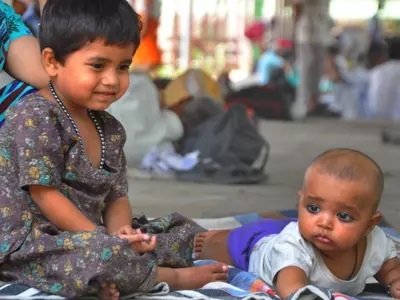Punjab Leads India’s Shift towards Girl Child Adoption: Hindu Adoption Act Data Reveals

: In many societies, the preference for a male child has been deeply ingrained, often driven by cultural beliefs and societal norms. However, recent data under the Hindu Adoption and Maintenance Act (HAMA) in India sheds light on a significant shift in this trend. Over the past two years, there has been a remarkable increase in the adoption of girl children, with Punjab emerging as a frontrunner in this positive change.
Adoption Trends Across India: The adoption data presented by the Union government, as revealed by additional solicitor general Aishwarya Bhati, indicates a notable surge in the adoption of girl children across various states. Out of a total of 15,486 adoptions recorded under HAMA from 2021 to 2023, 9,474 girls were chosen by adoptive parents, surpassing the number of boys selected, which stood at 6,012.
Punjab’s Leading Role: Among the states, Punjab and Chandigarh have particularly stood out for their commendable efforts towards gender equality in adoption. With 4,966 girls adopted out of a total of 7,496 adoptions registered under HAMA, Punjab has emerged as a leader in prioritizing the adoption of girl children. This proactive approach in Punjab reflects a significant departure from traditional gender biases prevalent in many parts of the country.
Adoption Data Across Other States: The adoption trend towards girl children is not limited to Punjab alone. States like Himachal Pradesh, Tamil Nadu, Delhi, and others have also shown positive inclinations towards adopting girls. Despite variations in numbers, the data indicates a growing acceptance and willingness among prospective adoptive parents to embrace girl children.
Preference for Younger Children: Irrespective of gender, the favored age range for adopted children continues to be under six years old, as per the Central Adoption Resource Authority (CARA). This preference underscores the importance of early childhood development and the desire among adoptive parents to provide a nurturing environment from a young age.
Challenging Patriarchal Norms: Despite these encouraging trends, challenges persist in ensuring the well-being and empowerment of girl children in India. With a sex ratio at birth of 929 girls per 1000 boys, as per NFHS-5 data, there is a pressing need for collaborative efforts from government agencies, NGOs, and international organizations to address deep-rooted patriarchal norms that perpetuate gender inequality.
Conclusion: The increasing adoption of girl children, particularly in states like Punjab, signifies a progressive shift towards gender equality in India. However, sustained efforts and collective action are essential to dismantle discriminatory practices and create a more inclusive society where every child, regardless of gender, receives equal opportunities and care.
Re-reported from the article originally published in The India Times









